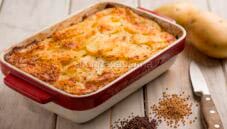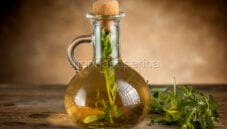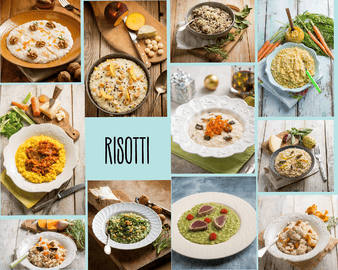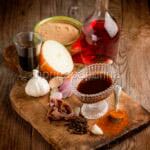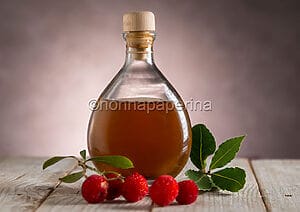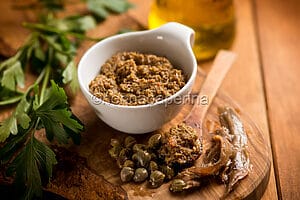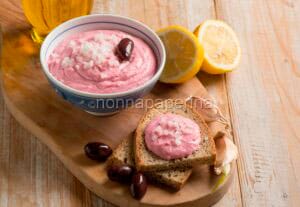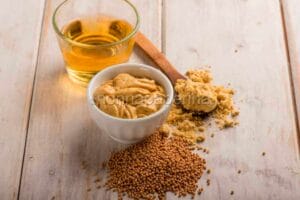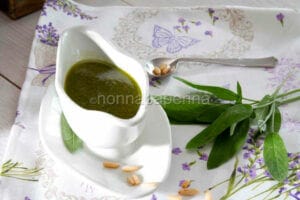
Mustard: Discovering an Unmistakable Sauce
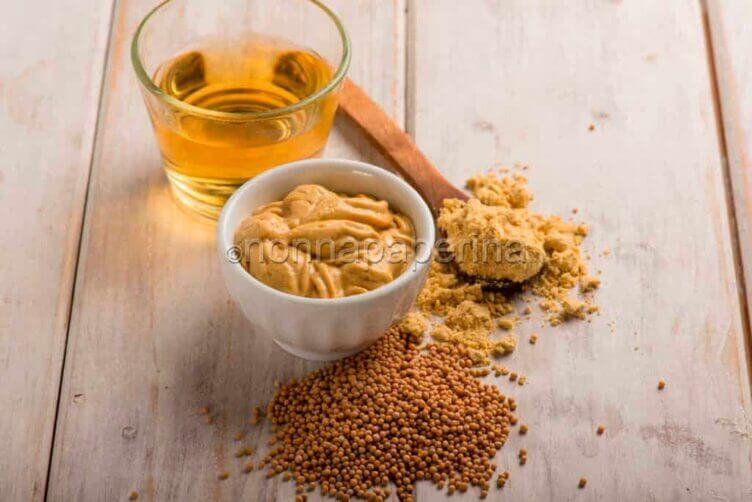
Although we think of it as a basic sauce, it is actually much more
We frequently undervalue mustard’s origins and qualities, despite using it to season and improve the flavour of our food. In fact, this particular condiment is produced from small seeds that ripen at the end of summer. The plant that produces these seeds is called Brassica, a vegetable that grows spontaneously in many areas of Europe and belongs to the Cruciferae family.
We are able to manufacture one of the most well-known and adored sauces in the world thanks to this plant. Let’s study in detail all the properties and important characteristics of these seeds that we often unknowingly bring to our tables.
Recipe mustard
Preparation mustard
- For classic mustard, take a large bowl and pour in the mustard seeds, then add the vinegar.
- Leave to soak overnight, then drain the liquid thoroughly.
- Pour the seeds, salt, and sugar into the blender, then turn it on and blend until you get a smooth and homogeneous cream.
- For the ancient mustard, let the mustard seeds rest in the vinegar overnight.
- Then blend them together with the water, oil, honey, and salt.
- Stop blending when you have obtained a fairly dense and not too smooth cream. And voilà, the two-tone mustard is ready! All you have to do is place it in one or more refrigerator jars. The two-tone mustard can be kept for a very long time, and there is no need to add oil as you consume it.
For the classic mustard:
For 2 jars:
- 200 gr. of mustard seeds,
- 150 ml. of apple cider vinegar,
- 70 ml. of natural water,
- 40 ml. of extra virgin olive oil,
- 80 gr. of brown sugar,
- a pinch of salt.
For the ancient mustard:
For 2 jars:
- 50 gr. of yellow mustard seeds,
- 50 gr. of black mustard seeds,
- 80 gr. of apple cider vinegar,
- 80 ml. of natural water,
- 20 ml. of extra virgin olive oil,
- 40 ml. of honey,
- a pinch of salt.
The mustard plant: a variety of colours and countless characteristics
A great deal of information is available regarding mustard. Asia is home to the Brassica Species, which dates back almost 3,000 years before Christ was born. There are four types of this plant: brown, black, wild, and yellow.
A number of minerals, including phosphorus, calcium, potassium, selenium, zinc, copper, and magnesium, are present in mustard seeds, together with significant levels of proteins, lipids, and vegetable fibres. They can also boast high levels of omega 3, vital amino acids for our health, and vitamins A, B1, B2, B3, C, E, K, and J. Thanks to all these nutrients, the fruits of the mustard plant have laxative, antioxidant, and detoxifying properties.

However, some research has also shown that using Brassica seeds can assist with psoriasis and protect the heart, lower blood sugar, lower bad cholesterol, and detoxify the body. Many of these benefits are more appreciable through the use of the oil obtained from the seeds of this plant, but we can also benefit simply by eating the sauce.
Mustard in the kitchen: uses, calories, and contraindications
Thanks to the few ingredients in mustard and the pungent taste of these seeds, they make a very popular sauce that is used in restaurants and our own kitchens to season and flavour a wide variety of items, including sandwiches. Raw seeds can be used in the kitchen to prepare numerous and unique dishes with a special added value.
Nevertheless, it is also reasonable to take into account the sauce’s calorie content and any associated contraindications. Nutritionists caution us against consuming excessive amounts in order to prevent the possibility of gaining weight. In fact, for every 100 grams, we can assimilate 580 calories.
This food’s capacity to greatly excite the gastrointestinal tract is another reason for its contraindication. Because of this, it is not advised for people who have gastritis or ulcers. Obviously, we can solve this issue and just enjoy the flavour and advantages of mustard by applying a light coating, which, as you are well aware, also contains other substances.
Ancient mustard with whole seeds: a versatile sauce.
It is an extremely well-liked condiment. It complements everything, including meat-based second courses and French fries. It is loved for its somewhat bitter flavour, which is robust without being overpowering. Unlike the other mustard recipes, this one is different. Naturally, it is created from the seeds of this priceless plant, and while its texture might not be different from traditional preparations, it can have more nuanced, distinct scents.
It is a two-tone mustard, a trait that results from the combination of two distinct mustard seed varieties and is also driven by the addition of additional components. It is an even more versatile mustard, which can be used like any other composite spice but also to act as a condiment for first and second courses based on meat.
The mixed black and yellow seeds are used to make the traditional Italian mustard. The most well-known of these is probably the French mustard, or Dijon mustard, which comes in two varieties: a strong and a gentle one. Lastly, the English mustard is very similar to ours with the addition of brown mustard seeds.
The benefits of this tasty sauce
Black and yellow mustard seeds are treated to create two-tone mustard, as you may have inferred from the component list. What distinguishes them? Not just in colour, though. In actuality, black mustard has a slightly distinct flavour than yellow mustard, with the former being much more spicy. Conversely, the latter has unique biological characteristics. Most importantly, a lengthy shelf life (similar to oil) is assured.

In general, mustard, both yellow and black, boasts strong beneficial properties. First of all, it stimulates blood circulation and promotes the expulsion of toxins. Secondly, it has a laxative and digestive function. Finally, it boasts antirheumatic, detoxifying, and antiglycemic properties. According to recent studies, it even counteracts the formation of bad cholesterol!
The significance of honey
The most well-known and widely used natural sweetener is honey. Additionally, it is so tasty that some people choose to eat it by itself. It is undoubtedly a component in many recipes, particularly desserts. What does it do in the recipe for two-coloured mustard, then? In actuality, it has a So, what does it do in the two-coloured mustard recipe? In reality, it plays a decisive role. First of all, it enhances the mustard sauce from a chromatic point of view, making it tend towards amber. Secondly, it acts as a flavour balancer.
Because of its powerful flavour, mustard is more often used as a condiment than a sauce. This use is made possible by the honey, which also lessens the bitter taste. Additionally, honey has several qualities that can result in medicinal effects: it is a potent antibacterial, an antioxidant, and it can neutralise the effects of free radicals. Finally, honey is known for its antiinflammatory and immunostimulant properties.
Any mustard recipes? Of course we have them!
COULD IT BE INTERESTING FOR YOU
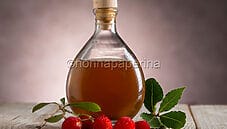
Strawberry tree vinegar, excellent for vegetables and side...
How to choose the strawberry tree fruit In order to prepare a good strawberry tree vinegar, it is advisable to choose the fruit carefully. For this type of vinegar, slightly ripe strawberry tree...
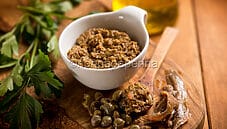
Caper sauce, a special condiment that requires no...
A focus on capers The protagonist of this sauce is obviously capers, a recurring presence in many traditional recipes, especially in southern Italy. Capers are particularly useful as a key component...

Taramosalata, a colourful and aromatic Greek sauce
All the deliciousness of Mullet roe What makes taramosalata unique is that its primary ingredient is mullet roe. It must be noted, nevertheless, that certain Middle Eastern variations—despite...




